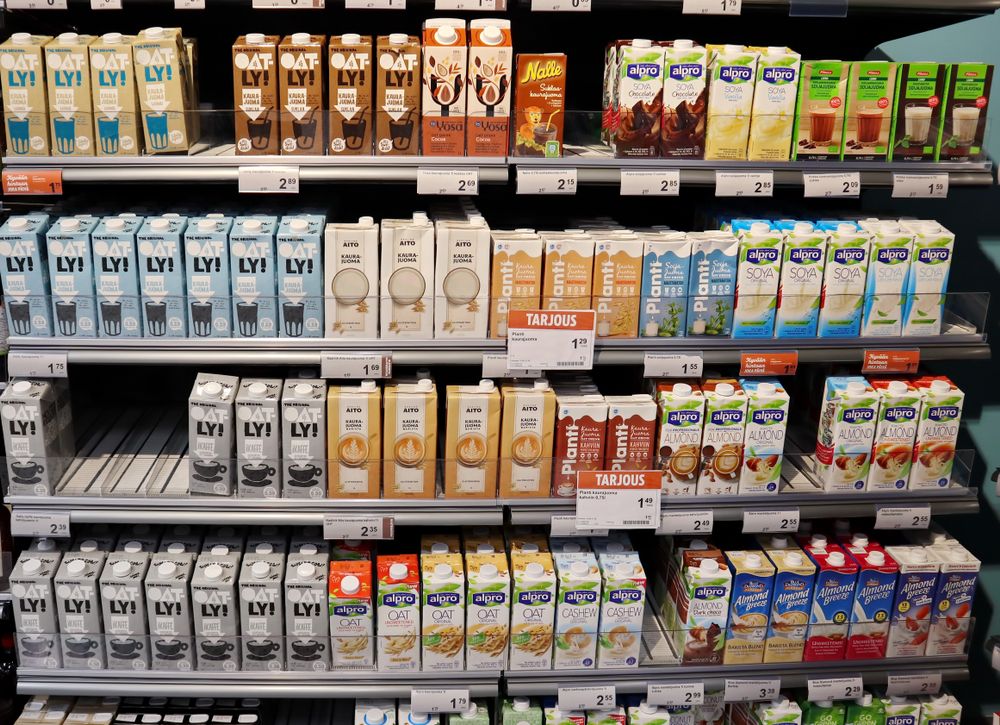There’s no denying that plant-based milk alternatives have a big presence. From dairy cases to artisanal coffee shops, customers can choose from a growing variety of replacements for cow’s milk. A recent report, the Good Food Institute 2021 U.S. Retail Market Insights, Plant-based Foods, notes that plant-based milk accounts for 16% of all dollar sales for milk in the US, with a 4% one-year dollar growth and a household penetration of 42%. North America is the third largest market globally for plant-based milk. Innova Market Insights reports that North America accounted for an 11% share of dairy alternative drinks launches between July 2021 and June 2022. Launch activity was more robust in Europe and Asia – each region contributed one-third of new dairy alternative drinks over the same 12-month period.
Several factors are driving innovation in North American dairy alternative drinks. In its analysis of the marketplace, Innova identifies varied factors around clean products (crafted using 100% natural, carbon neutral packaging), enhanced protein content, nutrient parity with cow’s milk, reduction of inherent and added sugar, and functional ingredients (ginger, green tea extract, other immune-boosters and antioxidants). Innovation is likely to continue as new companies enter the marketplace and all products compete for consumers.
Production methods
Production of dairy alternative milk, sometimes spelled “mylk” to differentiate it from traditional milk, involves several steps. The cell structure of the plant base – typically nuts, seeds, grains, or legumes – is disrupted through soaking and grinding, or other methods. The resultant base mixture requires heating to deactivate enzymes, filtering to remove unwanted material, and heating to destroy pathogens. What differentiates one brand from another is the chosen base or bases, ingredients that enhance sensory properties, masking agents to cover up any bean or pea flavor notes, and added nutrients.
Types of bases continue to expand
Years ago, soy was the dominant base in dairy milk alternatives. Consumer sentiment, particularly in the US, then turned away from soy as questions arose regarding genetic modification of soy beans and health implications of soy consumption. Despite the lack of scientific evidence to substantiate these concerns, US consumption of soy milk dropped. Today, almond is the number one base in plant-based milk and accounts for about 60% of product bases. Oat is a fast-growing number two base, even in Asia where soy products are readily embraced.
Many leading brands offer a portfolio of products with varied bases and flavors to appeal to a broad range of consumers. Danone’s Silk line includes soy, cashew, almond, and coconut milk products. Beverage products from Blue Diamond Growers, an agricultural cooperative for California almond growers, feature an almond milk base alone or combined with coconut milk or bananas. Elmhurst Milked produces a wide range of clean label nut milks, including almond milk, cashew milk, walnut milk, and hazelnut milk. Most are made from only the signature nut plus water. Other brands in the US include Ripple (pea protein), Seeds of Wellness (chia seeds), Good Karma (pea protein with flax oil), and Califia Farms (almond milk, oat milk with pea protein, almond plus coconut milk). Companies typically offer both unflavored and flavored varieties, and many produce thicker products for use in coffee beverages.
Seeking nutrition parity
Plant bases for dairy alternative drinks do not match the nutrition profile of cow’s milk. That is why many products are fortified to better replicate key dairy nutrients. Because almonds and cashews are relatively low in protein – and their milks are even lower – almond milk and cashew milk brands that feature a protein claim have added a source of protein, typically pea protein. Pea protein-based Ripple adds enough protein to match the level in dairy milk; the brand’s products also are fortified with calcium and vitamin D. Hope & Sesame enhances its sesame protein base with either pea protein or chickpea protein. Dairy alternative bases also lack the key vitamins and minerals of dairy milk, so many brands fortify with the hallmark dairy milk nutrients calcium and vitamin D. Ripple, for example, adds calcium and vitamin D in amounts that exceed the nutrient content of an equivalent volume of cow’s milk. Several brands also add vitamin B12, which is found naturally in dairy milk but not in plant-based products, to serve as a source for vegans. Still, fortified soy milk currently is the only plant-based dairy alternative drink included in the Dietary Guidelines for Americans and permitted in school meals programs as a nutritional equivalent to cow’s milk.
Products also may contain nutrients and ingredients not found in dairy milk, such as fiber, medium-chain triglyceride oil for followers of the ketogenic diet, omega-3 fatty acids, including alpha-linolenic acid, and functional ingredients.
One ingredient to watch for is animal-free whey protein. Cultivated through precision fermentation, animal-free whey protein offers high quality dairy protein that is identical to the whey protein found in cow’s milk. While not strictly plant-based, it offers an option for consumers looking for animal-free products.
Drinking to sustainability
The sustainability messaging found on dairy alternative packaging can appeal to consumers who shop with the environment in mind. Sustainable products are highly prominent in Europe, where approximately half of 2021 new food and beverage launches carried a sustainability-related claim, according to Innova Market Insights. This compares to 17% in Asia and 8% in North America, although the prevalence of claims is growing in both regions.
Consumer interest in sustainability is helping drive growth of plant-based dairy alternatives. As reported in a 2020 article in the Journal of Dairy Science on consumer perception of the sustainability of dairy products and plant-based alternatives, consumers who purchased plant-based dairy alternatives along with dairy products were more likely to say that sustainability is important, as compared to consumers of dairy only. Consumers who participated in the study defined sustainability as minimal carbon footprint and greenhouse gas emissions, few or no preservatives, animal happiness and welfare, and simple ingredients. Many plant-based dairy alternatives call out their sustainability credentials on their website. Common claims include reduced carbon footprint, lower water usage, less plastic used in packaging, restoration of land and water, and alignment with organizations committed to sustainability.
Coming next – products made with upcycled ingredients such as spent barley grain, proteins left over from starch and oil production, and “ugly” ingredients that combine nutrition with sustainability messages.


